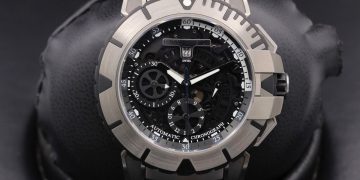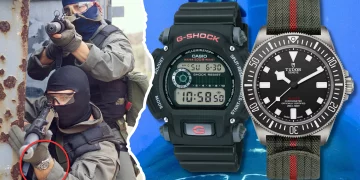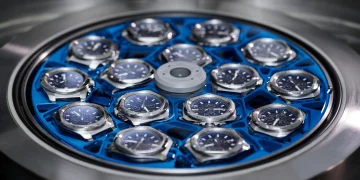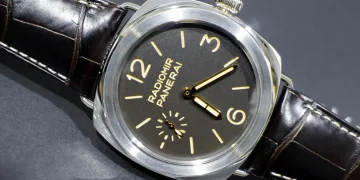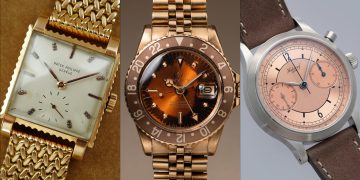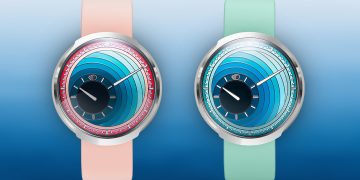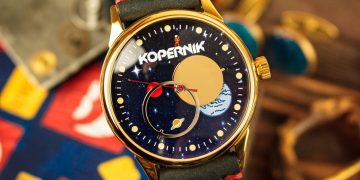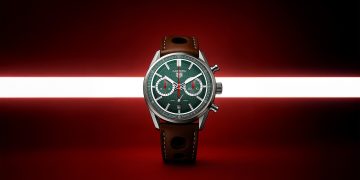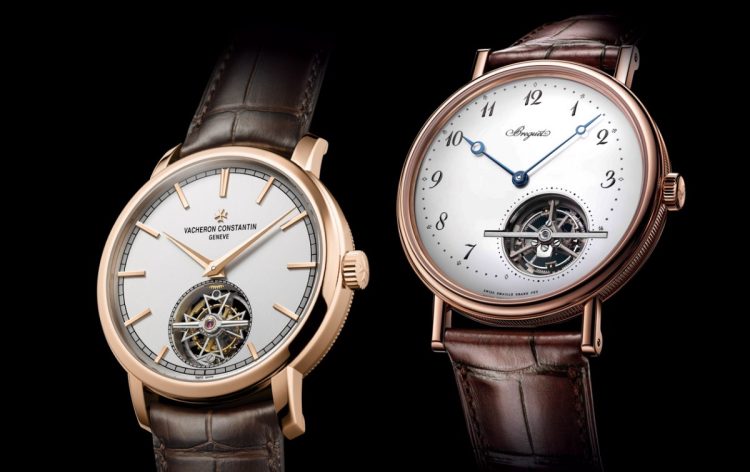Introduction: The Pinnacle of Watchmaking Complications
- Introduction to High-End Complications:
Define complications in watchmaking and explain the context in which perpetual calendar and tourbillon complications are viewed in the world of horology. - Purpose of the Article:
This article will explore the craftsmanship and technological advancements behind both the perpetual calendar complication and the tourbillon complication. Both are revered for their complexity, but they differ in function, design, and technical execution. This comparison will highlight the innovation, skills, and engineering feats involved in creating each complication.
1. Defining the Perpetual Calendar and Tourbillon Complications
- What Is a Perpetual Calendar?
- History and Definition: The perpetual calendar is one of the most intricate complications. It automatically adjusts for the different lengths of months and leap years.
- Components Involved: Breakdown of the key elements such as the month wheel, date wheel, day wheel, leap year indicator, and how they interact to create a self-adjusting timepiece.
- Technological Feat: Explain the mechanical design required to account for leap years and month-end variations without manual intervention.
- What Is a Tourbillon?
- History and Definition: A tourbillon is a rotating cage that houses the escapement and balance wheel. It was originally created to counter the effects of gravity on the timekeeping of pocket watches.
- Components Involved: Discuss the rotating cage, escapement, balance wheel, and their relationship to timekeeping. Explore the technical challenge of placing the escapement inside a rotating cage.
- Technological Feat: Explain how the technology improves timekeeping and how it can be perceived as a luxury complication today, even though its original purpose is less critical in modern watches.
2. Craftsmanship Behind Perpetual Calendar and Tourbillon Watches
- Craftsmanship of Perpetual Calendar Watches
- Movement Engineering: Explain the level of craftsmanship involved in designing and assembling the movement. Watchmakers must create a highly intricate system of gears, springs, and levers to synchronize the calendar mechanism with the timekeeping movement.
- Precision and Longevity: Discuss the skill needed to ensure the long-term accuracy of the perpetual calendar mechanism, which can run without needing a reset for decades.
- Materials Used: Highlight the choice of materials in creating durable parts for perpetual calendars such as brass, stainless steel, gold, and platinum. Discuss the challenges of integrating high-end materials for both the timekeeping and calendar mechanisms.
- Iconic Examples of Perpetual Calendars: Discuss notable perpetual calendars such as the Patek Philippe Calatrava 5320G, Audemars Piguet Royal Oak Perpetual Calendar, and Jaeger-LeCoultre Master Ultra Thin Perpetual.
- Craftsmanship of Tourbillon Watches
- Movement Engineering: Creating a tourbillon is a monumental task, requiring fine craftsmanship to integrate a rotating cage with a precision escapement and balance wheel. This involves designing a system that can rotate without compromising accuracy.
- Technical Skill: Discuss the challenges watchmakers face in assembling a tourbillon, including the handling of extremely small parts, the precision required for the rotating cage, and the difficulties of ensuring the cage operates smoothly.
- Materials Used: Like perpetual calendars, tourbillons also require fine materials, often including sapphire crystals, titanium, and special alloys for the rotating cage and escapement components.
- Iconic Examples of Tourbillons: Discuss prestigious tourbillon timepieces like Breguet Classique Tourbillon, Audemars Piguet Royal Oak Tourbillon, and Jaeger-LeCoultre Master Grande Tradition Tourbillon.
3. Technological Innovations in Perpetual Calendar and Tourbillon Watches
- Technological Advancements in Perpetual Calendar Watches
- Leap Year Adjustment: Explain the leap year adjustment mechanism in perpetual calendars, a unique technological feature that allows the watch to track not only months with 28, 30, or 31 days but also adjust automatically for leap years every four years.
- Self-Correction Mechanism: Dive into the self-correcting system that ensures the date and day are always accurate. This is achieved through the intricate interworking of wheels, springs, and cams.
- Digital Integration: Some modern perpetual calendars also integrate digital displays alongside traditional hands to offer a more contemporary solution to reading calendar functions.
- Movement Accuracy: A well-made perpetual calendar movement is designed for precision. Advanced high-frequency movements are often integrated with perpetual calendar systems to maintain high levels of timekeeping accuracy.
- Technological Advancements in Tourbillon Watches
- Improving Timekeeping with Gravity Compensation: While the original purpose of a tourbillon was to offset the effects of gravity on the escapement, modern tourbillons are used primarily for their intricate design and mechanical novelty. Discuss how contemporary tourbillons improve or maintain timekeeping accuracy.
- Precision Engineering: Tourbillons require advanced engineering to maintain a delicate balance between the rotating cage and the escapement system. Discuss how micro-engineering techniques and high-quality materials improve the performance and longevity of these movements.
- Variations in Design: Some tourbillons today are mounted on the periphery of the watch dial, while others are created with multiple rotating cages or other unique design elements to improve aesthetic appeal and complexity.
- Technological Challenges: The challenges involved in making a tourbillon include rotation mechanics, reliability, and the incredibly precise tolerances that must be maintained for the escapement to function accurately within a rotating cage.

4. The Technical Comparison: Perpetual Calendar vs. Tourbillon Watches
- Movement Complexity
- Perpetual Calendar Complexity: Discuss how the complexity of perpetual calendar watches lies in the integration of multiple calendar functions into a single timepiece. This complexity is compounded by the need for continuous operation without manual intervention for years.
- Tourbillon Complexity: Discuss the complexity of a tourbillon as a technical masterpiece that integrates rotating components into the movement. The rotating cage introduces additional challenges that demand precise mechanical execution to maintain timekeeping accuracy.
- Practical Benefits vs. Aesthetic Appeal
- Perpetual Calendar: Perpetual calendars are practical and have a functional value. Their primary purpose is to track and display the full calendar cycle, offering a highly useful complication for those who need accurate date information.
- Tourbillon: Tourbillons, while historically designed to enhance accuracy, are now valued mostly for their aesthetic appeal and mechanical elegance. Their design is more of a showcase of technical prowess than a necessity for improving timekeeping.
- Precision and Durability
- Perpetual Calendar Durability: Perpetual calendars are built to last with proper care. The longevity of their mechanism and their ability to self-correct make them ideal for daily wear.
- Tourbillon Durability: Tourbillons are more delicate due to the rotating cage. Their delicate balance means that proper care and maintenance are required to ensure long-term durability.
5. Comparing the Craftsmanship: How Do Watchmakers Tackle Each Challenge?
- Craftsmanship Behind Perpetual Calendar Watches
- Discuss how skilled horologists take years to develop the expertise required to craft such intricate calendar movements, requiring a deep understanding of both mechanical engineering and aesthetic design.
- Craftsmanship Behind Tourbillons
- Highlight the artisanal nature of tourbillons, where even the slightest error in creating the rotating cage can result in a compromised timekeeping ability. The hand-finishing involved makes it one of the most revered aspects of luxury watchmaking.
6. Conclusion: Perpetual Calendar Watches vs. Tourbillon Watches – Which is the Superior Craft and Technology?
- Final Thoughts on Craft and Technology:
In conclusion, while both perpetual calendars and tourbillons represent the zenith of horological engineering, they serve different purposes and embody different values in craftsmanship and technology.- Perpetual Calendar Watches are about functionality, precision, and long-term utility.
- Tourbillons represent the art of mechanical precision, where the focus is more on the beauty of movement and luxury craftsmanship.
- Which Watch Should You Choose?
The decision between these two high-end complications ultimately depends on personal preferences and what the user values most in a watch: practical complexity (perpetual calendar) or mechanical elegance (tourbillon).



